 Author: Daxin
Author: Daxin

Different types of applications require different types of sensors to collect data from the environment. This article introduces some common IoT sensors.In the Internet of Things (IoT) ecosystem, two points are very important: the Internet and physical devices such as sensors and actuators. As shown in Figure 1, the underlying layer of the IoT system consists of sensor connectivity and a network for collecting information. This layer is a crucial component of the IoT system and establishes network connections with the next layer, which is the gateway and network layer.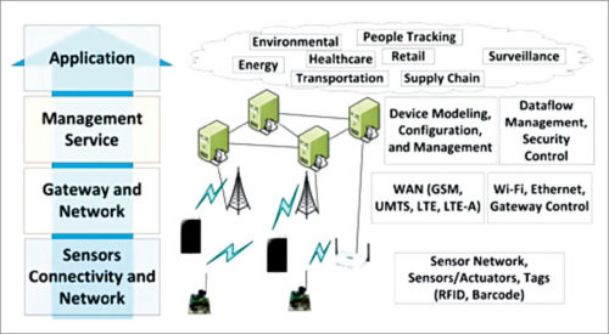 Figure 1: IoT Architecture LayersThe primary purpose of sensors is to collect data from the surrounding environment. The “things” of the sensor or IoT system constitute the front end. These are directly or indirectly connected to the IoT network after signal conversion and processing. However, not all sensors are the same; different IoT applications require different types of sensors. For example, digital sensors can easily interface directly with microcontrollers using the Serial Peripheral Interface (SPI) bus. However, for analog sensors, data can be converted to SPI output using an Analog-to-Digital Converter (ADC) or Sigma-Delta modulator.
Figure 1: IoT Architecture LayersThe primary purpose of sensors is to collect data from the surrounding environment. The “things” of the sensor or IoT system constitute the front end. These are directly or indirectly connected to the IoT network after signal conversion and processing. However, not all sensors are the same; different IoT applications require different types of sensors. For example, digital sensors can easily interface directly with microcontrollers using the Serial Peripheral Interface (SPI) bus. However, for analog sensors, data can be converted to SPI output using an Analog-to-Digital Converter (ADC) or Sigma-Delta modulator.
Common Types of IoT Sensors
Temperature Sensors
These devices measure the heat generated by objects or surrounding areas. They can be used in air conditioning, refrigerators, and similar devices for environmental control. They are also used in manufacturing processes, agriculture, and the health industry.From manufacturing to agriculture, temperature sensors can be used in almost every IoT environment. In manufacturing, sensors are used to monitor the temperature of machines. In agriculture, they can be used to monitor the temperature of soil, water, and plants.Temperature sensors include thermocouples, thermistors, Resistance Temperature Detectors (RTD), and integrated circuits (IC). Figure 2 shows some common types of temperature sensors.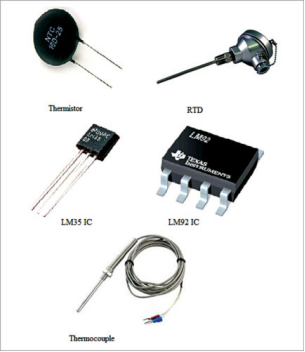 Figure 2: Temperature Sensors
Figure 2: Temperature Sensors
Humidity Sensors
The amount of water vapor or humidity in the air affects human comfort and many industrial production processes. Therefore, monitoring humidity levels is important. The most commonly used units for humidity measurement are Relative Humidity (RH), Dew/Frost Point (D/F PT), and Parts Per Million (PPM).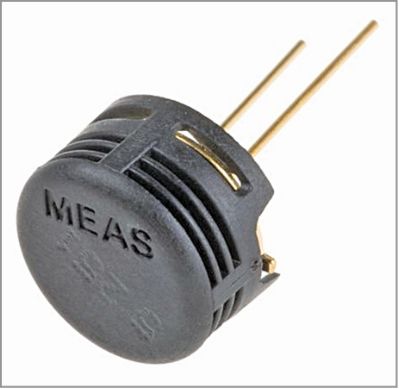 Figure 3:HPP801A031 Humidity Sensor
Figure 3:HPP801A031 Humidity Sensor
Motion Sensors
Motion sensors are used not only for security purposes but also for automatic door control, automatic parking systems, automatic sinks, automatic toilet flushers, hand dryers, energy management systems, etc. You can use these sensors in IoT and control them via smartphones or computers. The HC-SR501 Passive Infrared (PIR) sensor is a popular motion sensor for hobby projects.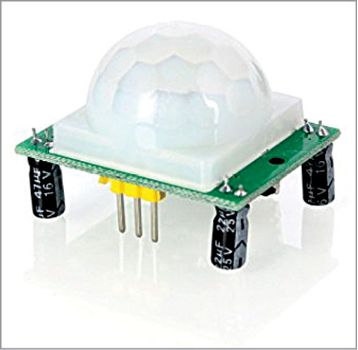 Figure 4:PIR Motion Sensor
Figure 4:PIR Motion Sensor
Gas Sensors
These sensors are used to detect toxic gases. The most common sensing technologies are electrochemical, photoionization, and semiconductor. With advancements in technology and the introduction of new regulations, there are a large number of gas sensors available to help expand wired and wireless connections deployed in IoT applications.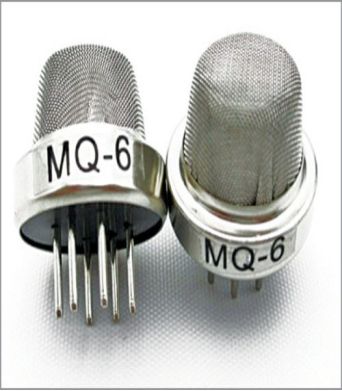 Figure 5:Gas Sensors
Figure 5:Gas Sensors
Smoke Sensors
Smoke detectors have been used in homes and industries for a long time. With the advent of IoT, their applications have become more convenient and user-friendly. Additionally, adding wireless connectivity to smoke detectors enables other functionalities, enhancing safety and convenience.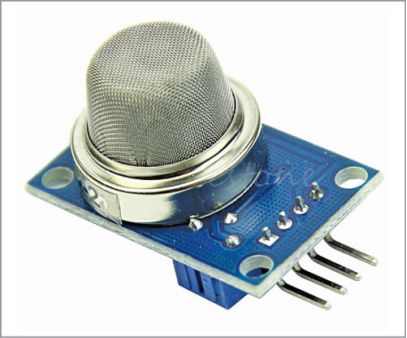 Figure 6:Arduino-Compatible Smoke Sensor
Figure 6:Arduino-Compatible Smoke Sensor
Pressure Sensors
These sensors are used in IoT systems to monitor systems and devices driven by pressure signals. When the pressure range exceeds threshold levels, the device alerts the user to issues that need to be addressed. For example, the BMP180 is a popular digital pressure sensor used in mobile phones, PDAs, GPS navigation devices, and outdoor equipment. Pressure sensors are also used in smart vehicles and aircraft to determine force and altitude. In vehicles, Tire Pressure Monitoring Systems (TPMS) are used to alert drivers when tire pressure is too low, potentially creating unsafe driving conditions.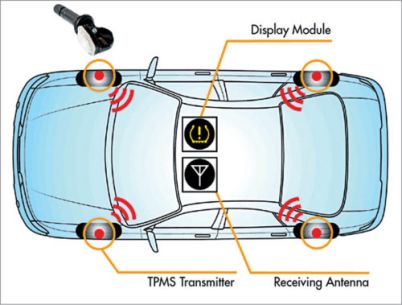 Figure 7:TPMS Overview (Provided by www.mwrf.com)
Figure 7:TPMS Overview (Provided by www.mwrf.com)
Image Sensors
These sensors can be used in digital cameras, medical imaging systems, night vision devices, thermal imaging devices, radar, sonar, media rooms, and biometric systems. In the retail industry, these sensors are used to monitor customers accessing stores through IoT networks. In office and corporate buildings, they are used to monitor employees and various activities through IoT networks. Figure 8:Different Types of Image Sensors
Figure 8:Different Types of Image Sensors
Accelerometers
These sensors are used in smartphones, vehicles, aircraft, and other applications to detect the direction, shaking, tapping, tilting, motion, positioning, impact, or vibration of objects. Different types of accelerometers include Hall Effect accelerometers, capacitive accelerometers, and piezoelectric accelerometers.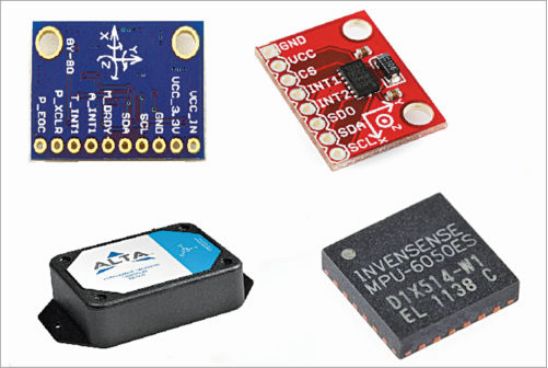 Figure 9:Various Types of Accelerometers
Figure 9:Various Types of Accelerometers
Infrared Sensors
These sensors can measure the heat emitted by objects. They are used in various IoT projects, including healthcare to monitor blood flow and blood pressure, smartphones for remote control and other functions, wearables to detect light levels, thermometers to monitor vehicle temperatures, and blind spot detection.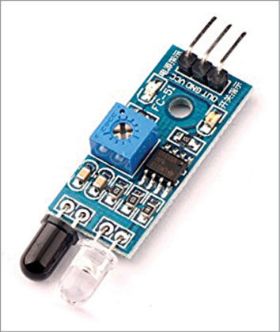 Figure 10:Infrared Sensors
Figure 10:Infrared Sensors
Proximity Sensors
These sensors can detect the presence or absence of nearby objects without any physical contact. Types include inductive, capacitive, photoelectric, ultrasonic, and magnetic sensors. These are primarily used for object counting, process monitoring, and control.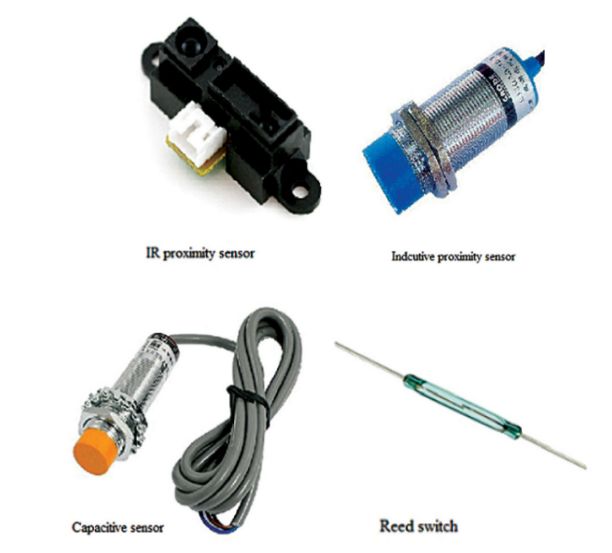 Figure 11:Various Proximity SensorsIn a typical IoT system, sensors can collect information and route it to a control center, where decisions are made, and commands are sent back to actuators in response to the sensed input.
Figure 11:Various Proximity SensorsIn a typical IoT system, sensors can collect information and route it to a control center, where decisions are made, and commands are sent back to actuators in response to the sensed input.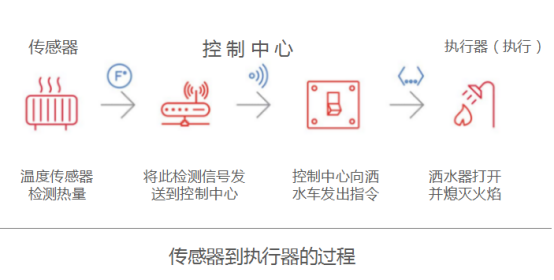
The Importance of Accurate Sensors
Imagine you are a bar owner, and you want to measure the amount of beer flowing from one of the taps. One way to do this is to install a sensor on the line from the beer keg to the tap. This sensor likely contains a small impeller inside. When beer flows through the sensor, it causes the impeller to rotate, much like a propeller on a weather station.As the impeller rotates, it sends a series of electrical pulses to a computer. The computer interprets the pulses to determine how much beer has flowed through. Sounds simple, right?This is where sensors become interesting. If you look back at the description above, you will find that such measurements never directly measure the amount of beer flowing through the sensor. Such measurements are merely interpretations of a series of electrical pulses from the sensor. This means that it is necessary to first figure out how to interpret the sensor, which is calibration.To calibrate the sensor, the measurement scheme becomes necessary to take a container of known capacity, such as a pint glass. Then, this container must be filled under various conditions to determine what the electrical pulse signal looks like.For example, when pouring from a new keg, the foam is often more, and the reading of the foam differs from that poured from the middle of the beer (the beer). Only through repeated trials and a large amount of data can the measured data be reliable and interpretable, which can determine how much beer has been poured.Once the correlation is well known, protocols can be established to ensure that the sensor reads correctly every time. This is called calibration. Reputable manufacturers will provide fully calibrated devices and instructions on how to recalibrate to verify sensor accuracy.The accuracy of the sensed data is crucial because you will make critical mission decisions based on subsequent analysis of the data, and if the data is incorrect, those decisions will be worthless.This is also the role of sensors in the IoT; the effectiveness of the entire IoT system relies on the accuracy of the data collected by sensors.
IoT Platforms
IoT devices connect with other IoT devices and provide data through Internet transmission protocols. Therefore, the two main components of an IoT system are the backend network and IoT platform, and the frontend sensors and actuators.Most IoT platforms rely on sensors. There are many IoT platforms available, but the two prominent ones are industrial and consumer. The applications and requirements of these two platforms differ slightly. Industrial IoT platforms must be stable, reliable, and secure, as platform failures can cost millions of dollars or even lives. On the other hand, failures in consumer IoT platforms may only cause inconvenience.However, when choosing the best IoT platform for your application, there are some common parameters to consider. Some of these parameters include reliability, stability, flexibility, security support, pricing models, mobile/Web application support, the ability to handle multiple connected products, data retention or backup in case of power or network connection failure, and the speed and time to launch products.
Conclusion
As IoT applications grow, the demand for sensors is also increasing. There are a variety of sensors available. However, it is also important to choose the right sensor and the right IoT platform for IoT applications.
